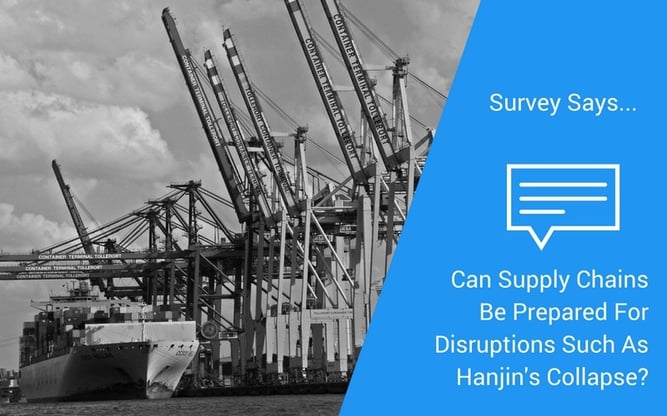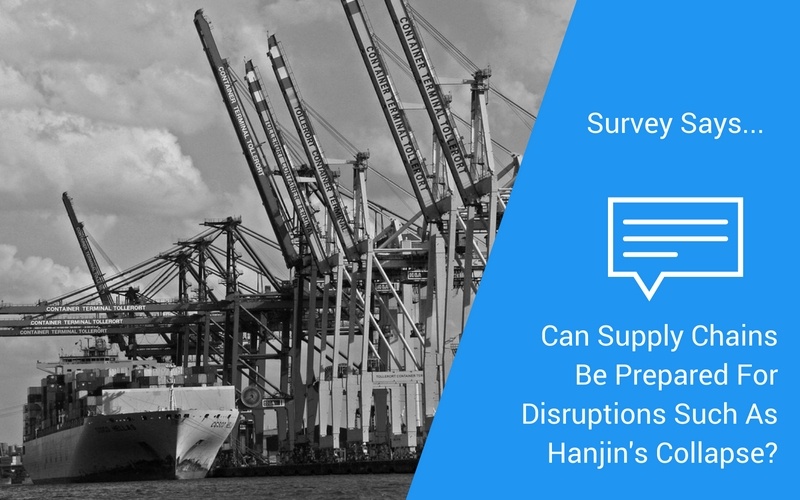
Managing supply chain risk in today’s environment is an increasingly difficult task. Globalization, natural disasters, geopolitical concerns and more can all strain supply chains. With the recent financial collapse of Hanjin, we asked folks on social media if supply chains can prepare for such disruptions. The results were mixed with no clear answer as 38% said yes, 38% said no and 23% were not sure.
The Hanjin Collapse
The Hanjin collapse is going to cause disruption in many supply chains for a while, as we noted in last week's blog post concerning Christmas inventory. The US Department of Agriculture has stated that Hanjin's bankruptcy would cause shipping difficulties for the next 2 to 3 months. "The fallout of Hanjin Shipping is like Lehman Brothers to the financial markets," Gerry Wang, CEO of Seaspan said. Indeed, NC State University’s College of Management notes that the Hanjin collapse should not have come as a surprise. The ocean cargo market has been suffering for some time with overcapacity, low rates and a flat global market. In addition, the school notes on its blog post that “Many ship builders and ocean carriers overextended themselves while the economy was growing, and these expectations resulted in a huge amount of investment that has resulted in too many ships and carriers competing for too little cargo”.
Managing Risks
Still, one cannot manage all risks 100%; but, instead one should strive to mitigate as much of the risk as possible. Dr. Madhav Durbha, Vice President of Industry Strategy at Kinaxis, has penned a thoughtful blog post concerning steps that businesses should take to manage supply chain risk.
-
Identify – Collaborate with teams to identify risks that could potentially affect your supply chain.
-
Quantify and Mitigate - Assess the probability of each risk occurring and build them into your business justification as you make outsourcing decisions.
-
Monitor – Utilize technology and ‘big data’ to monitor potential threats.
-
Respond – Establish processes and systems that support the speed of response and collaboration.
-
Learn and Improve - It is important to understand how one respond to risks. Take these learnings and add to your risk recovery playbooks or contingency processes.
How do you manage supply chain risks? Leave your reply below:
%201.png)


-1.jpg)



